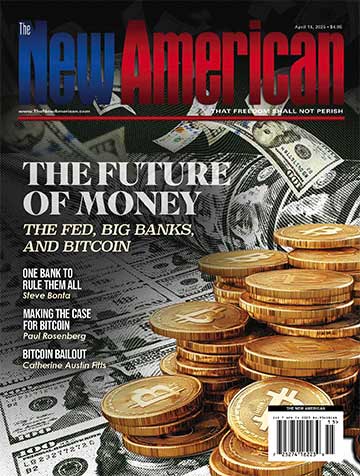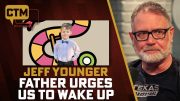
Data from the Centers for Disease Control and Prevention show that more people die from legally prescribed drugs than from heroin and cocaine combined. The CDC has classified the situation as an “epidemic.”
What’s worse is that a study by the Journal of Public Policy and Marketing published earlier this year revealed that teens continue to be particularly vulnerable to the allure of prescription drugs because they perceive pharmaceuticals as being “blessed by a trusted institution”: the Food and Drug Administration.
The study was authored by Richard Netemeyer of the University of Virginia, Scot Burton of the University of Arkansas, Barbara Delaney of the Partnership for Drug Free Kids, and Gina Hijjawi of American Institutes for Research.
Natural News writes, “According to the study, more than 1,000 teens from 40 regions around the country participated in an online survey which asked them about their use of tobacco, alcohol, legal and illegal drugs.”
The findings were telling.
The study found that prescription drug use increased for teens who struggled with issues such as anxiety or low-confidence. Other motivators for teens’ use of prescription medications included a desire to be popular, pressure to be a “good teen,” or the use other illegal/banned substances. According to the Partnership for Drug-Free Kids, teens looking for a way to feel better tend to view prescription drugs as a safer alternative to street drugs
Surveys from the National Institute on Drug Abuse indicate that 20 percent of teens say they have taken a prescription drug without having a prescription for it themselves, and five percent report abusing over-the-counter cough medicine to get high.
“Teens don’t understand that if you misuse prescription drugs you’re still abusing drugs. Just because it’s not a street drug doesn’t mean it’s not abuse,” says Alexandria Ybarra, campus executive director of the American Pharmacists Association (APhA).
Dubbing this age group “Generation RX,” APhA notes that technology has made it too easy for teens to self-diagnose and self-prescribe medications based on their Internet research.
“Sometimes students or teens will get prescribed large quantities of medication and they may not use it all and they don’t know how to get rid of them.… They might give them to friends who have self-diagnosed themselves with a certain disorder,” Ybarra said.
The Partnership for Drug-Free Kids reports that the majority of these teens are accessing the prescriptions right from the medicine cabinets of family members. “If there is a bottle of pills, a teen might think, ‘Why not try it?’ There is going to be that temptation,” Ybarra said.
Additionally, the CDC reported earlier this year that doctors are prescribing psychiatric medications for school-age children at alarming rates.
Unfortunately, evidence reveals that abuse of prescription drugs is potentially more fatal than the use of illegal substances. Data from the CDC show 23,000 deaths in 2013 resulting from pharmaceutical abuse, which amounts to more than half the overdose limits in the United States that same year.
And the damage from prescription drug use is not simply a one-generation problem.
“Drug overdose was the leading cause of injury death in 2013,” reports the CDC, adding, “Among people 25 to 64 years old, drug overdose caused more deaths than motor vehicle traffic crashes. From 1999 to 2013, the amount of painkillers, called opioids, prescribed and sold in the U.S. has nearly quadrupled and overdose deaths have quadrupled in lock-step.”
And the use of opioids has contributed to an increase in heroin use for young people, the CDC reports, as heroin provides “the same euphoric high — when pills are hard to come by.”
The authors of the Journal of Public Policy and Marketing study attribute much of the pharmaceutical abuse problem to the pervasive perception of prescription drugs as safe, noting that when these prescriptions are approved by the FDA, pharmaceuticals are ultimately exempted from the stigmas attached to illegal substances. “Prescription drugs are seen as blessed by a trusted institution, the FDA, while increasingly aggressive advertising by drug companies simultaneously floods parents and children with messages that these substances are safe, popular, and beneficial,” the authors noted.
This positive perception of pharmaceuticals is heightened by drug companies’ ability to market directly to the consumer through television ads, prompting some to call for an end to consumer drug advertising.
In a 2013 editorial in the New York Times, for example, Kurt Strange — a professor of family medicine and community health at Case Western Reserve University in Cleveland, Ohio — wrote that pharmaceutical advertisements have helped cultivate a “pill-for-every-ill” approach to healthcare in the United States. “The decision to start long-term medication should be motivated by observations of patients and physicians, not stimulated by rosy ads,” Strange wrote.
Meanwhile, the authors of the Journal of Public Policy and Maketing study are encouraging adults to be more vigilant when they notice teens with high levels of anxiety, as those teens could easily fall prey to the appeal of prescription medications. Likewise, the authors contend that parents “underestimate the physical risks of prescription drugs and the likelihood that their children will abuse these drugs” and should be aware that many teens are unfamiliar with the risks of prescription drug abuse.
Meanwhile, the epidemic continues to grow.





